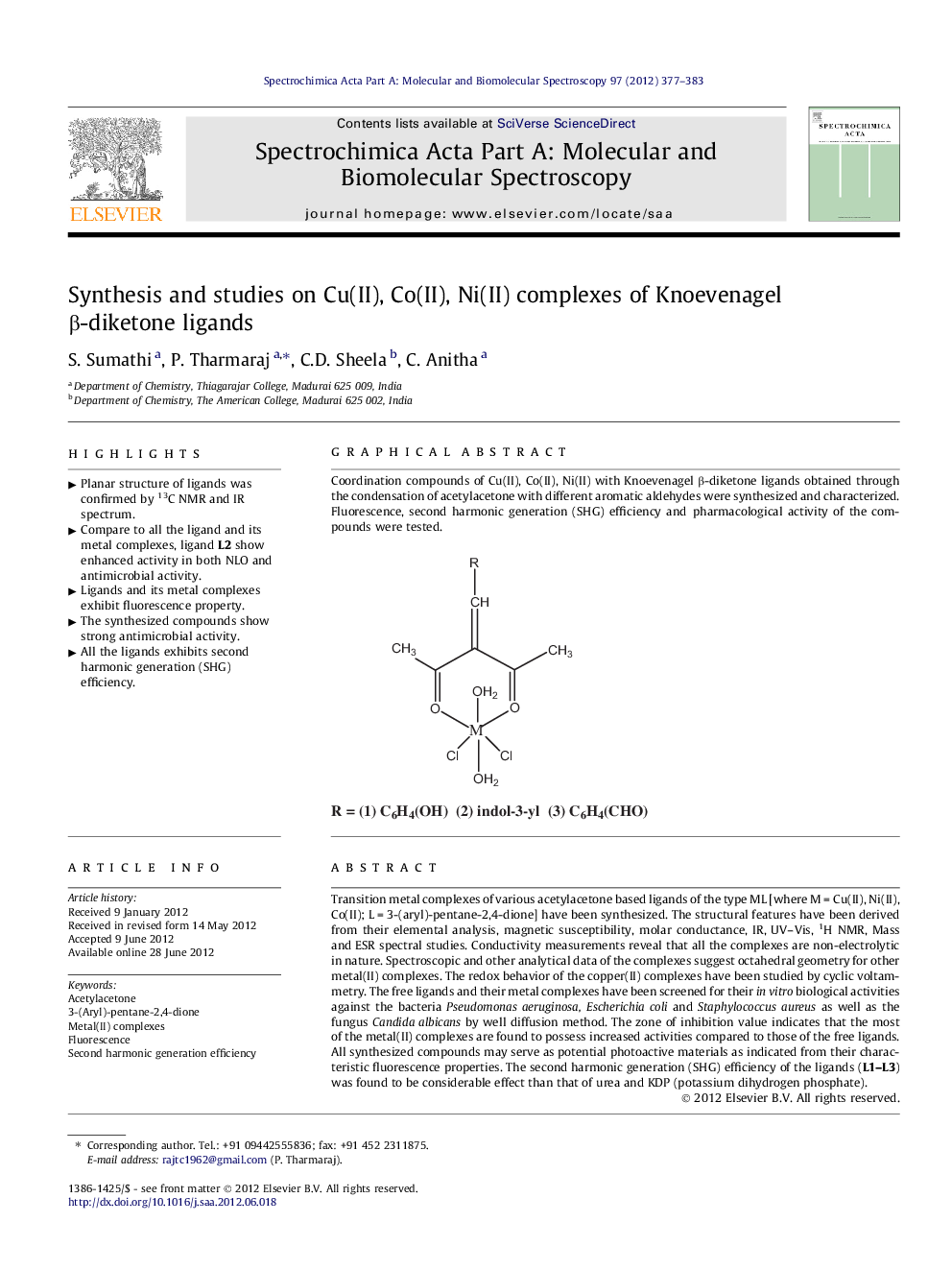| Article ID | Journal | Published Year | Pages | File Type |
|---|---|---|---|---|
| 1232323 | Spectrochimica Acta Part A: Molecular and Biomolecular Spectroscopy | 2012 | 7 Pages |
Transition metal complexes of various acetylacetone based ligands of the type ML [where M = Cu(II), Ni(II), Co(II); L = 3-(aryl)-pentane-2,4-dione] have been synthesized. The structural features have been derived from their elemental analysis, magnetic susceptibility, molar conductance, IR, UV–Vis, 1H NMR, Mass and ESR spectral studies. Conductivity measurements reveal that all the complexes are non-electrolytic in nature. Spectroscopic and other analytical data of the complexes suggest octahedral geometry for other metal(II) complexes. The redox behavior of the copper(II) complexes have been studied by cyclic voltammetry. The free ligands and their metal complexes have been screened for their in vitro biological activities against the bacteria Pseudomonas aeruginosa, Escherichia coli and Staphylococcus aureus as well as the fungus Candida albicans by well diffusion method. The zone of inhibition value indicates that the most of the metal(II) complexes are found to possess increased activities compared to those of the free ligands. All synthesized compounds may serve as potential photoactive materials as indicated from their characteristic fluorescence properties. The second harmonic generation (SHG) efficiency of the ligands (L1–L3) was found to be considerable effect than that of urea and KDP (potassium dihydrogen phosphate).
Graphical abstractCoordination compounds of Cu(II), Co(II), Ni(II) with Knoevenagel β-diketone ligands obtained through the condensation of acetylacetone with different aromatic aldehydes were synthesized and characterized. Fluorescence, second harmonic generation (SHG) efficiency and pharmacological activity of the compounds were tested.Figure optionsDownload full-size imageDownload as PowerPoint slideHighlights► Planar structure of ligands was confirmed by 13C NMR and IR spectrum. ► Compare to all the ligand and its metal complexes, ligand L2 show enhanced activity in both NLO and antimicrobial activity. ► Ligands and its metal complexes exhibit fluorescence property. ► The synthesized compounds show strong antimicrobial activity. ► All the ligands exhibits second harmonic generation (SHG) efficiency.
